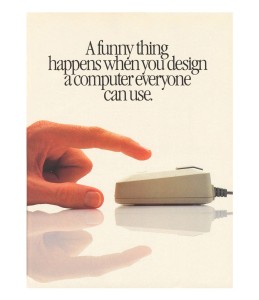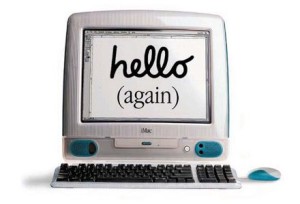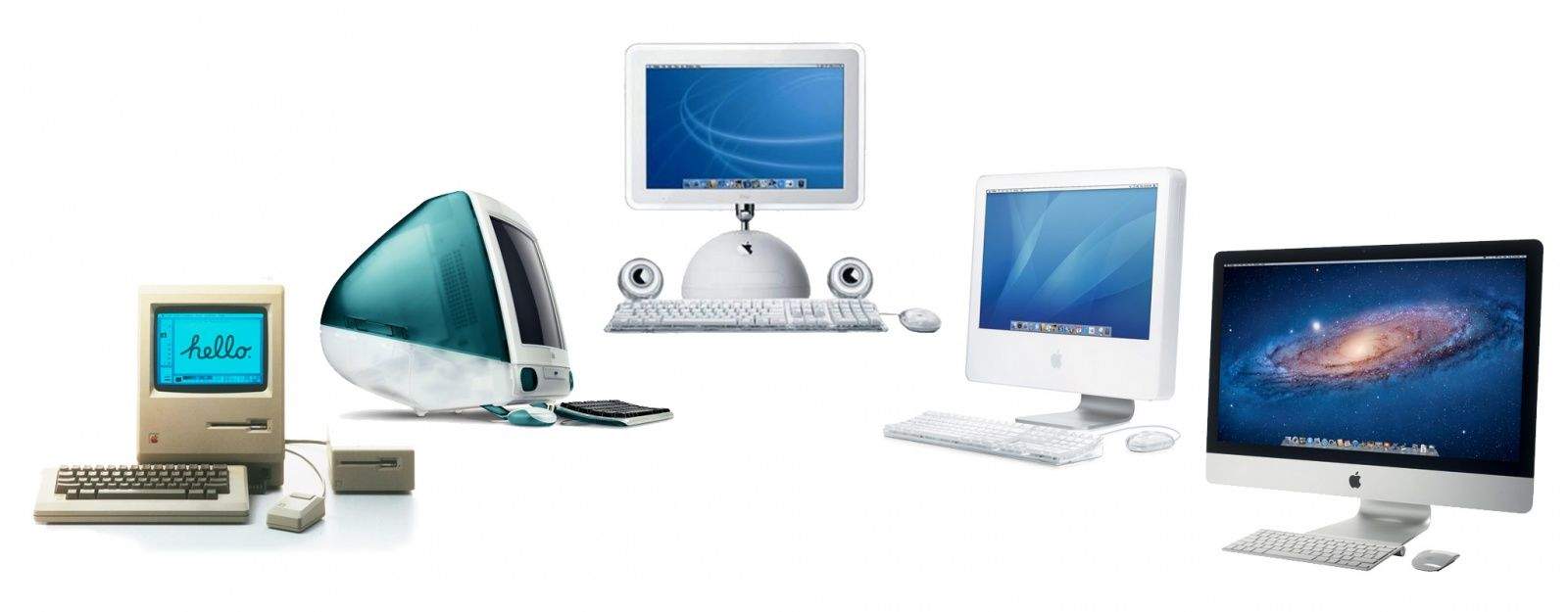Thirty years ago, Apple Computer introduced Macintosh.
The computing universe was far different back then, and this groundbreaking little computer represented a major change from the status quo. Appealing to creativity and emotion, the Mac introduced the world at large to the Graphical User Interface, the mouse, and a computer that was friendly and non-intimidating. Many of those ideas became new industry paradigms and survive with us to this day.
Computers come and go, it’s a fast changing industry and the pace accelerates every year. But the Mac as a brand has survived 3 decades. This is notable for any product and unheard of for computers! Why, what’s so special? What’s the meaning of the Macintosh turning 30?
At its core, beyond basic utility, the Mac’s appeal to many people is that it has always been a device that people want to use, rather than something that you have to use. People get attached to their Macs the same way they get attached to their cars or favorite bands. You remember your first Macintosh – where you were at the time and what it meant to you. That was true with the original Mac in 1984, and it’s still true today. Macs aren’t just tools, but visceral parts of our lives.
‘Macintosh’ is more than a brand. It’s a word that equates computers with usability, form and function. ‘Macintosh’ is a trigger – a word that evokes a particular time in many peoples lives who were just getting into computers at college, introducing computers into their business for the first time. It’s always interesting to see how people refer to their Windows machines. I’ve never heard anyone say ‘I loved my old Windows laptop,’ but I’ve heard from countless people on the fond memories of their old Mac. Jonathan Zufi – Author of Iconic, a book about Apple design.
 The Macintosh philosophy from the beginning has been computer as appliance. Plug it in, turn it on, and get working. The industrial design of the computer and the graphic design of the software were designed to let you focus on your work, your output, your creativity.
The Macintosh philosophy from the beginning has been computer as appliance. Plug it in, turn it on, and get working. The industrial design of the computer and the graphic design of the software were designed to let you focus on your work, your output, your creativity.
The interface was intended to mimic a typical office so that you didn’t have to learn esoteric things like filesystems and text commands; instead, you had a desktop, files and folders. The mouse allowed you to point at and interact with objects onscreen, and edited text was formatted as you watched in real time. You could name documents with more than eight characters and using punctuation marks. That was revolutionary to most people.
It appealed to artists. It appealed to writers. It wasn’t just for geeks. It was the Computer for the Rest of Us.
I remember the thrill and the delight of using the Mac for the first time as a teenager. It was like playing with the iPhone for the first time; a total revelation. The interface was so natural, so easy to use. You didn’t need to be shown how to use it. You could figure it out yourself. That’s been Apple’s genius of course, all these years; to create interfaces that anyone can use without having to crack a manual. Leander Kahney – Cult of Mac
The original Macintosh design team made a lot of good technical choices, and many of their implementations remain in use to this day. Prior to the Mac, concepts like the Graphical User Interface and hand-held pointing devices existed only in the realms of research labs and high-end workstations. Easy printing and networking capabilities came standard with the Mac, and soon PostScript, PageMaker and the LaserWriter defined an industry.
Think about the graphical tool icons used in MacPaint, or the “marching ants” box around an object to signify selection – these items are so ingrained into our computing culture that we sometimes forget they debuted on the Macintosh in 1984!
This is a testimony to the insights and vision of Steve Jobs. He and the Macintosh Division got a lot right the first time. This is similar to the Porsche 911. It’s going on fifty this year. How many car models have gone on for fifty years? Guy Kawasaki — former Macintosh Evangelist
The Mac-PC wars are long over. Choosing a computing platform these days is like choosing a brand of automobile; they all get you where you want to go, so you choose on aesthetics, design details and performance. A saying I’m fond of repeating to my clients is: with Macs you spend more time using the tool, and less time keeping the tool running. And unless you’re a computer geek, that’s an important thing.
 When Jobs came back to Apple his first new product was the iMac. A simple computing appliance, easy to use and pleasant to look at – the original Macintosh design concept modernized. It’s now the Honda Accord of computers, a stable product line with various changes throughout the years. Elegant, reliable and practical.
When Jobs came back to Apple his first new product was the iMac. A simple computing appliance, easy to use and pleasant to look at – the original Macintosh design concept modernized. It’s now the Honda Accord of computers, a stable product line with various changes throughout the years. Elegant, reliable and practical.
But not all Macs are family sedans. From the wicked fast Mac IIfx to the latest Darth-Vader Mac Pro, Apple can build muscle cars when it wants to. And sports cars – from the Powerbook to the MacBook Air, Apple’s portables define the computers you take with you.
In the Jony Ive era, style returned with a vengeance. Colorful computers, beautiful computers, thin and sleek. They look good in the home, objects d’art, as much as tools for work. But most importantly, they are still not intimidating. We really want to touch them.
Macintosh has survived so long because great ideas like great art or great music are timeless. Steve Jobs often likened the team’s creation to a work of art going so far as having the Macintosh team autograph the case as such. While the first Macintosh’s hardware was limited, Jobs’ vision was not. Eventually, the hardware and software would catch up to that vision and Macintosh would change computers forever. James Savage — RetroMaccast
Three decades later the modern Apple continues the legacy. The software has evolved with the hardware, and the modern Mac runs a very modern and stable variant of UNIX at its core.
Device dimensions have been drastically miniaturized while performance is maximized. iPhone and iPad, the offspring of Macintosh, take the computer fully mobile, utilizing direct touch controls to become even more integral parts of our lives.
That’s the thing about Apple products: these devices touch people lives. We like using them, we like owning them. Thirty years from now people will remember how they felt getting their first iPhone or iPad, or their first MacBook Air.
Can you say the same about your washing machine?
The Mac has lasted for 30 years because it set the standard. It showed the world how computers should work. And the same is true for the iPhone and iPad. They set the standard for multitouch tablets and phones. They’ll be around for the next 30 years; and I wouldn’t be surprised if the Mac is too. Leander Kahney – Cult of Mac
So what’s the meaning of the Mac turning 30? If you create something you love, execute it well, make it truly useful, and design it to be appealing, you can indeed change the world.


